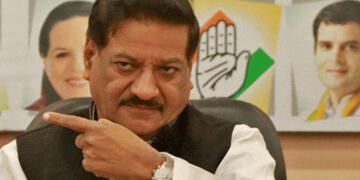In the ongoing crisis in Ukraine, India has clearly taken a side i.e. the side of peace and its national interest. And we will not let anybody dictate terms to us. Finance Minister Nirmala Sitharaman recently made this clear to the ‘Sermon’ western media in their own backyard.
Balanced and Pragmatic Approach
The Finance Minister went on an official visit to the US, to attend the annual spring meetings of the International Monetary Fund (IMF) and World Bank. During the visit, she gave an interview to Bloomberg in which she put forth India’s stand on the Ukraine-Russia crisis. She made it clear that India has a troubled neighbourhood with both nuclear-armed neighbours joining hands against it. So, India can’t ignore its regional interests. She reiterated that India wants a strong relationship with the western liberal world but we also have strong defence ties with Russia.
Sitharaman said, “You have a neighbour, who joins hands with another neighbour, both of whom are against me. In the context of the Russia-Ukraine war, God forbid, if there are alliances created, India has to be strong enough to protect itself. Unless I am strong, given the fact that I am geopolitically located in such an area, how do you expect me to even defend myself? Not strong as an aggrandizer or expansionist, but strong to defend our own 1.3 billion people — both politically, strategically and, equally important, economically.”
Non-Alignment 2.0
Since independence, non-alignment has been a central pillar of India’s foreign policy. In the last decade, developments like the US-China trade war, US exit from Afghanistan, COVID pandemic and ongoing Russia-Ukraine war has shook the US led western hegemony on geopolitical affairs. The new world order is emerging with new polarity equations. With no clear leader in sight, India is capturing its ‘unique’ place in that.
Read More: Dear Shashi Tharoor, notice carefully – India has already taken a side in the Russia-Ukraine war
We are the pole for peace and equitable development opportunities for all, including the developing and undeveloped world. To further strengthen its position, India has been making progress in developing a conducive talk between Russia and western world. So, to think that India will choose one side over the other is foolish and akin to living in a different universe. The thought of dumping Russia and its defence hardware all together in a hasty manner doesn’t hold water.
Joint Ventures or Make in India
As a developing nation, India knows that dependence on one nation for a key strategic sector like defence can anytime become a stranglehold. That is the reason why India has been relentlessly working on indigenisation of our armed forces i.e. Atmanirbhar in defence sector. Our defence imports fell 33% between 2011-15 and 2016-20. The major brunt of this drop has been suffered by Russia, which saw its exports to India dropped by 22%. But we can’t ignore our Russian dependence on spare parts, maintenance and our armed forces’ better synergy with Russian equipment.
Read More:After realizing that India won’t respond to threats, the US resorts to salesmanship
The US offer for replacing Russian defence hardware doesn’t involve technology transfer and joint ventures in key state-of-the-art military equipment. India-Russia are co-developing hypersonic Brahmos, manufacturing AK-203 rifles in Amethi, Uttar Pradesh. Hence the gesture of the US is just a baby step in the right direction. But with the US, there has always been one big rider involved. The US has many times betrayed its allies at crucial moments. In Fact, once US Secretary of State Henry Kissinger said, “To be an enemy of America can be dangerous, but to be a friend is fatal.”
Read More: India’s bold statement to the US amidst the Ukraine-Russia war
With back-to-back diplomatic slap to the US, its dispensation and self-righteous media should swallow a bitter pill. The US should drop the thought that India will act like a puppet for its interests. India has its spine and ‘unique’ way of running diplomacy and will decide key matters without coercion on a case-to-case basis.































